2025.10.23
A fusion of art and unique technology create “Kirakira” towels!
A fusion of art and unique
technology create “Kirakira” towels!
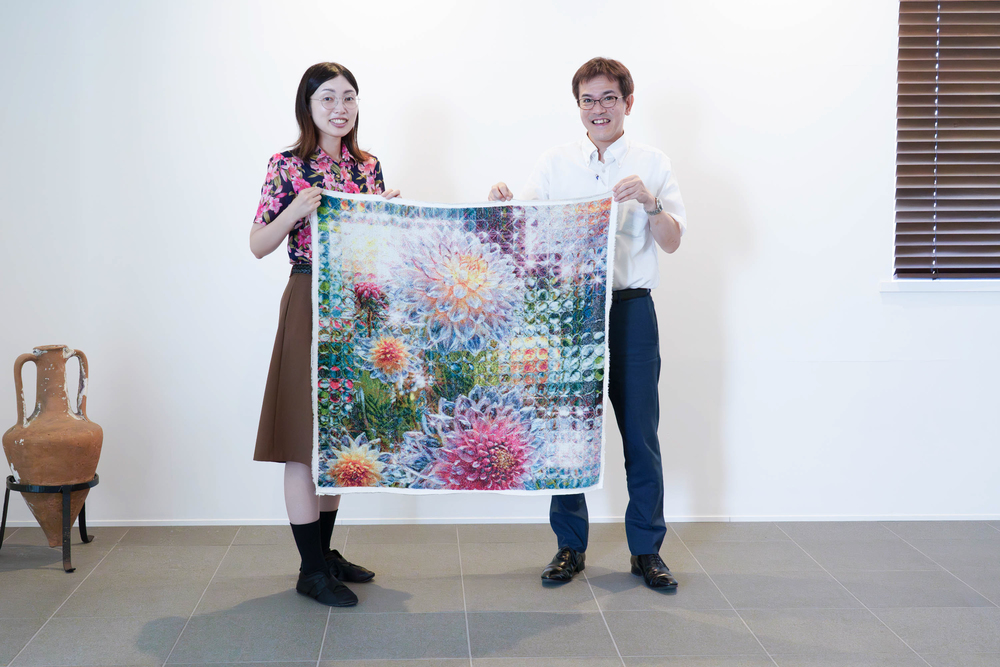
Artist Saeko Ehara's “Kirakira(sparkling)” expression has been transformed into a towel.
What kind of technology made it possible?
Saeko Ehara
After graduating from the Royal Academy of Fine Arts in The Hague (KABK) in the Netherlands in 2010, she worked as a VJ at various concert venues. Since 2022, she has focused on creating works that combine AI and generative art. Inspired by childhood memories of transparent objects like sparkling cards and glass, she has developed a unique “Kirakira (sparkling)” style for her work.
She has exhibited her work both domestically and internationally, including at the "Signage exhibition, DIFC" (Dubai, UAE, 2024), "Vivid Sydney, Darling Harbour" (Sydney, Australia, 2024), "AMBIENT KYOTO" (Kyoto, 2023), "Immersive Museum" (Nihonbashi, 2023), and "Bright Moments Tokyo" (Shibuya, 2023).
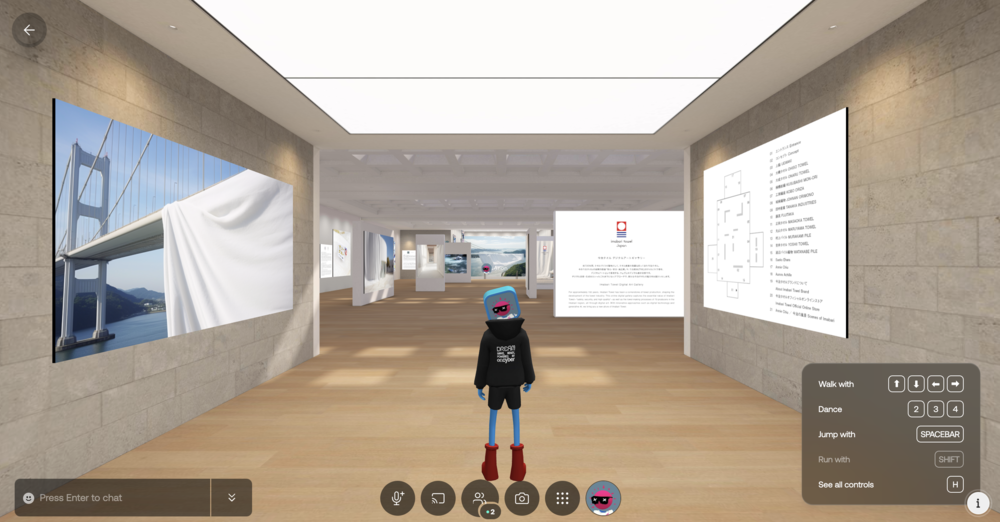
The "imabari towel digital art gallery" allows visitors to control an avatar and freely roam the virtual gallery.
The "imabari towel digital art gallery" opened in May 2024.
It exhibits digital works by artists with a fondness for Imabari towels.
The piece we're introducing this time is digital art by Saeko Ehara, who says, "I tried to express the feeling of touching a cloud when holding an Imabari towel."
Saeko Ehara has presented
“Kirakira” works all over the world
Many particles move lightly, and the angelic wings of a young girl sparkle. It's a beauty that makes you want to keep looking.
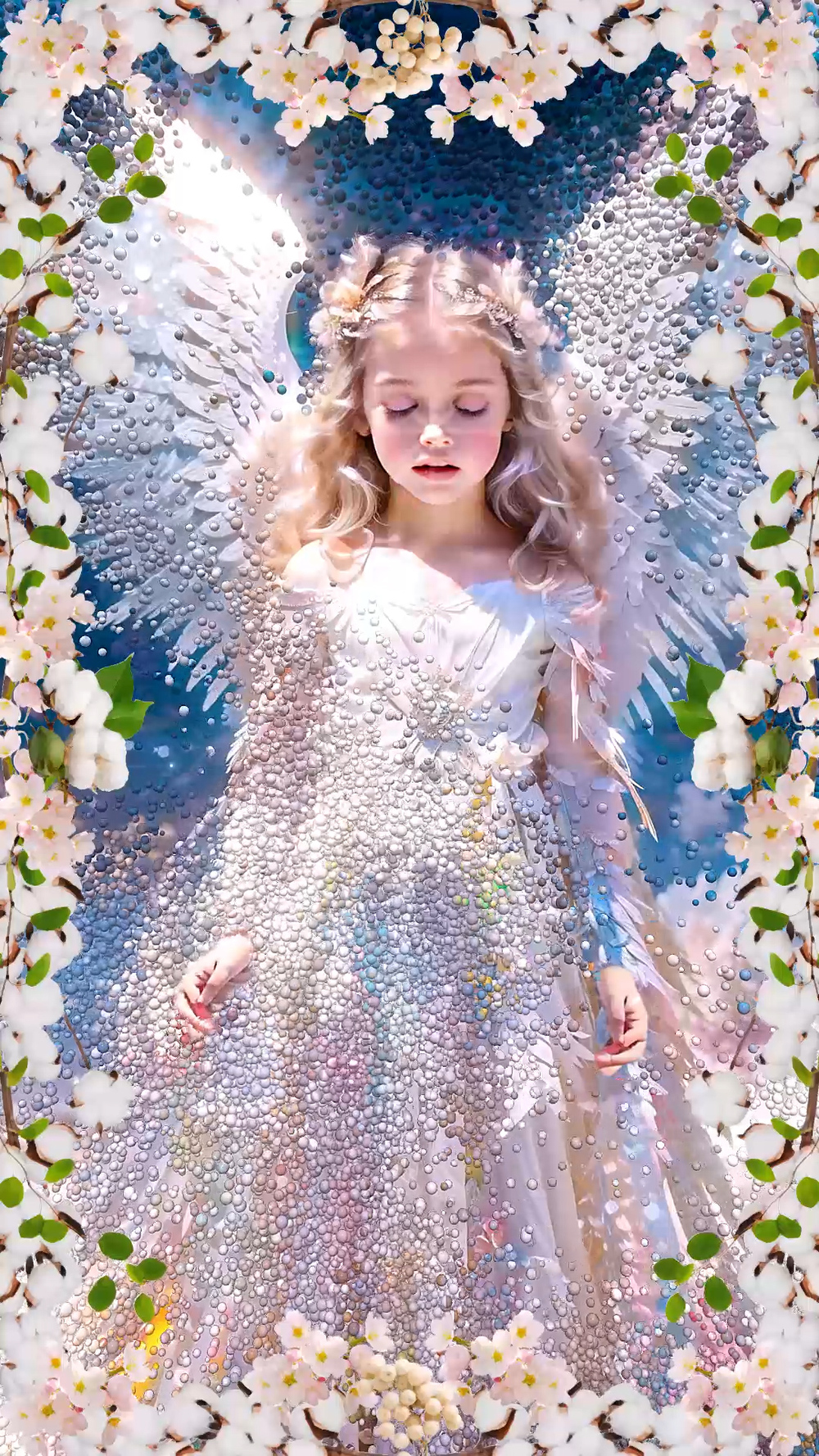
"Message" by Saeko Ehara is on display at the imabari towel digital art gallery.
Ehara has a background as a VJ (visual jockey), streaming the footage she creates to accompany music at concert venues. Her work is characterized by this kind of sparkling.
Through digital signage, installations, and more, she exploring the expressions of “Kirakira”.
And now, not only has she created artwork in a digital art gallery, but has created artwork using actual towels. How exactly does she express "Kirakira" through towels?
We spoke to Ehara herself to find out.
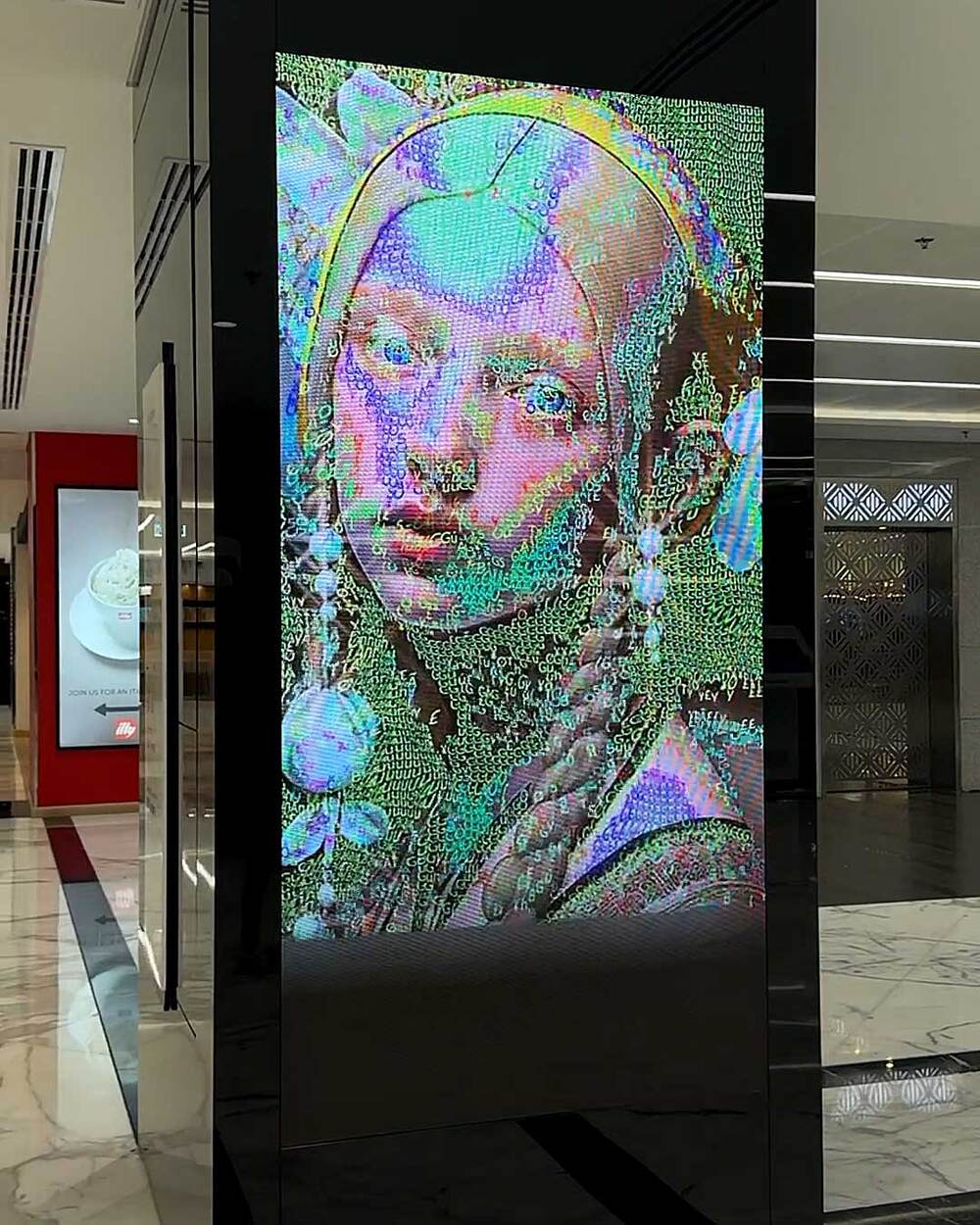
"Signage exhibition, DIFC"
(Dubai, UAE, 2024)
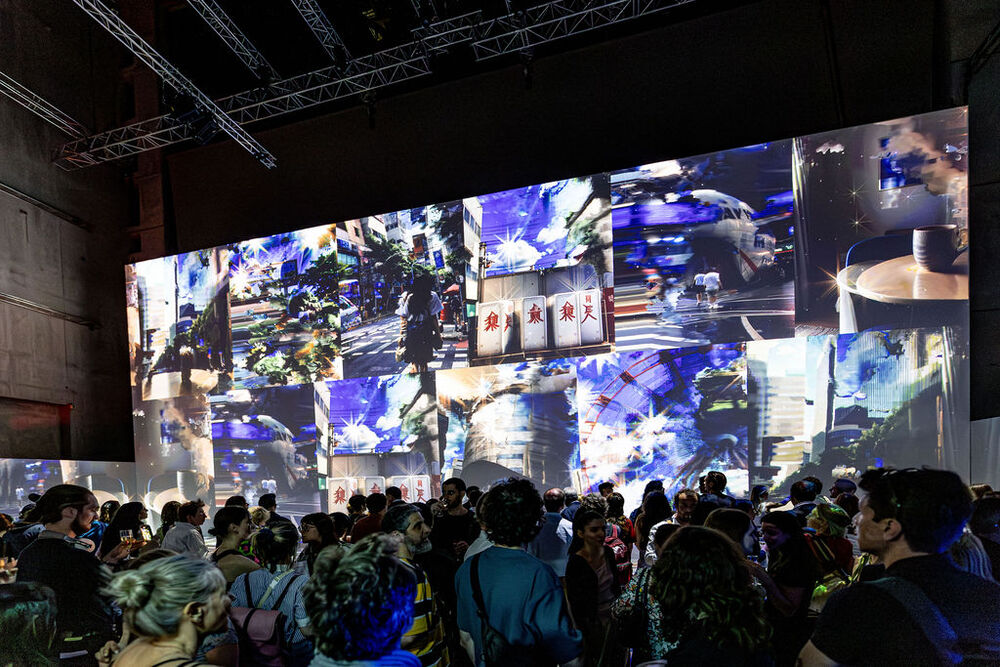
"Artificial Dreams II, Grand Palais Immersif"
(Paris, France, 2025)
First, let's talk about how this collaboration came about. What did you think when you heard about the towel artwork?
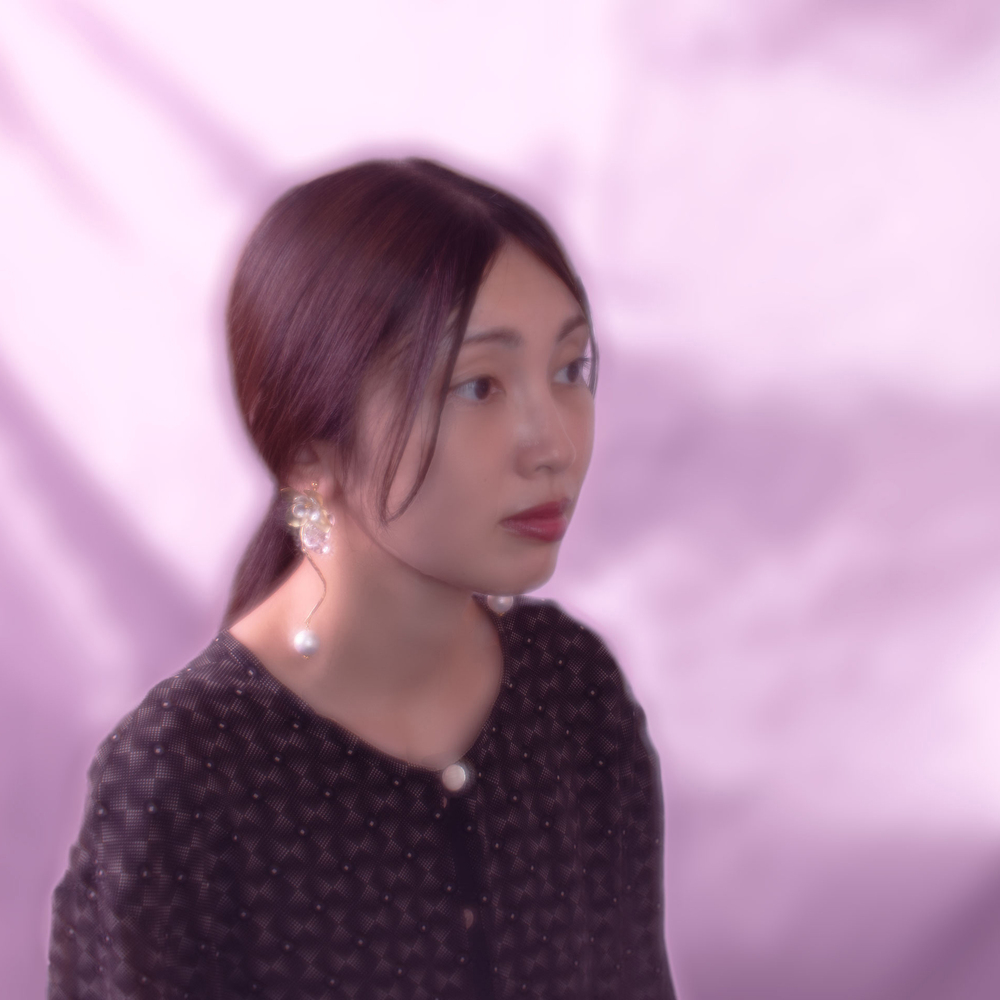
Ehara agreed to our interview, and answered each question clearly.
"I received an offer about collaborating with towel. I'd created prints at art fairs before, but they were primarily digital, so at first I had no idea what would come out of combining digital and towel artwork."
I see, so towel artwork was your first attempt.
Ehara, incidentally, loves to sleep on Imabari towels. She says she sleeps more comfortably by placing one on her pillow.
Fujitaka’s “Gosai-Ori”
technique supported the turning of
Ehara’s artwork into towels
Fujitaka, an Imabari towel manufacturer, was the one who turned Ehara's artwork into a towel.
This encounter led to the creation of a moving piece.
"The painting was so precisely reproduced on the towel that I thought it was an incredible technique.
When I saw the real thing, the image finally came to mind, and I asked if I could do it."
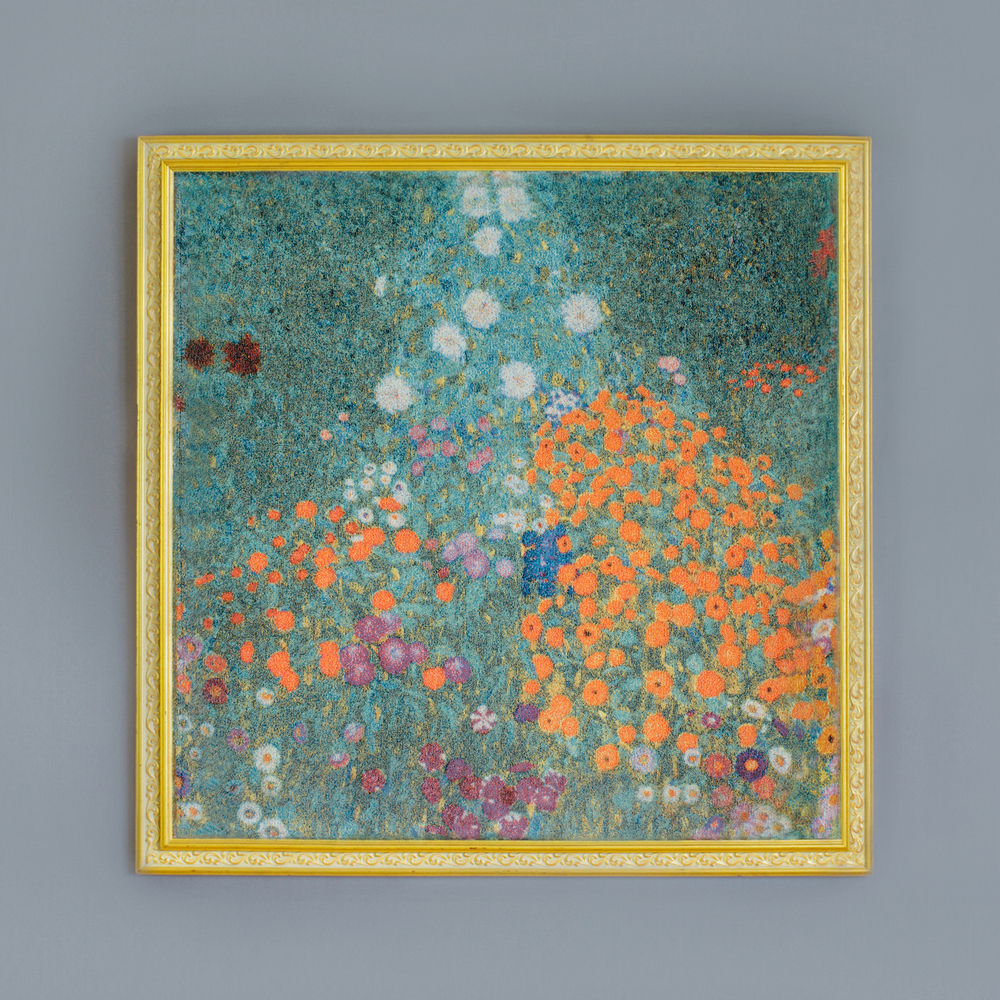
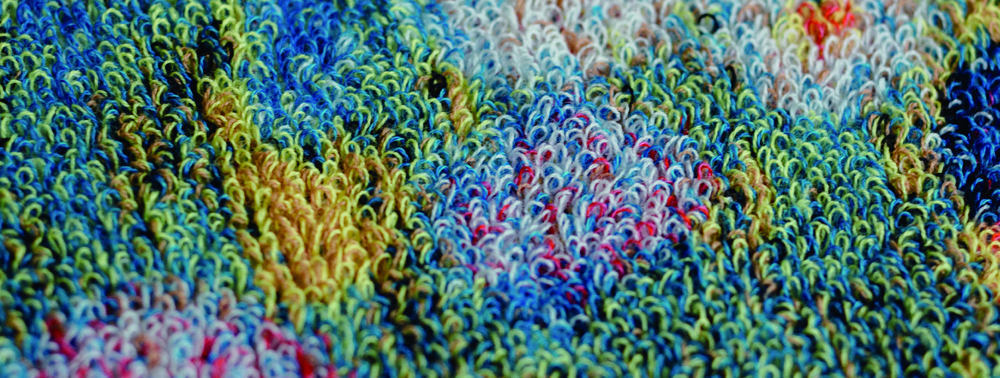
Fujitaka's towel is a reproduction of Klimt's masterpiece "Farmhouse in Buchberg" using “Gosai-Ori”.
From a distance, it looks like a painting (left),
but up close, you can see that it's intricately woven with different colored threads (right).
“Gosai Ori” is achieved by weaving threads dyed in five colors—red, blue, yellow, black, and white—in a jacquard weave with a textured surface. It's a highly skilled technique that Fujitaka has finally perfected over more than 7 years. By weaving towels with a density nearly twice that of regular towels, the result is a towel that looks like a painting or photograph when viewed from a distance.
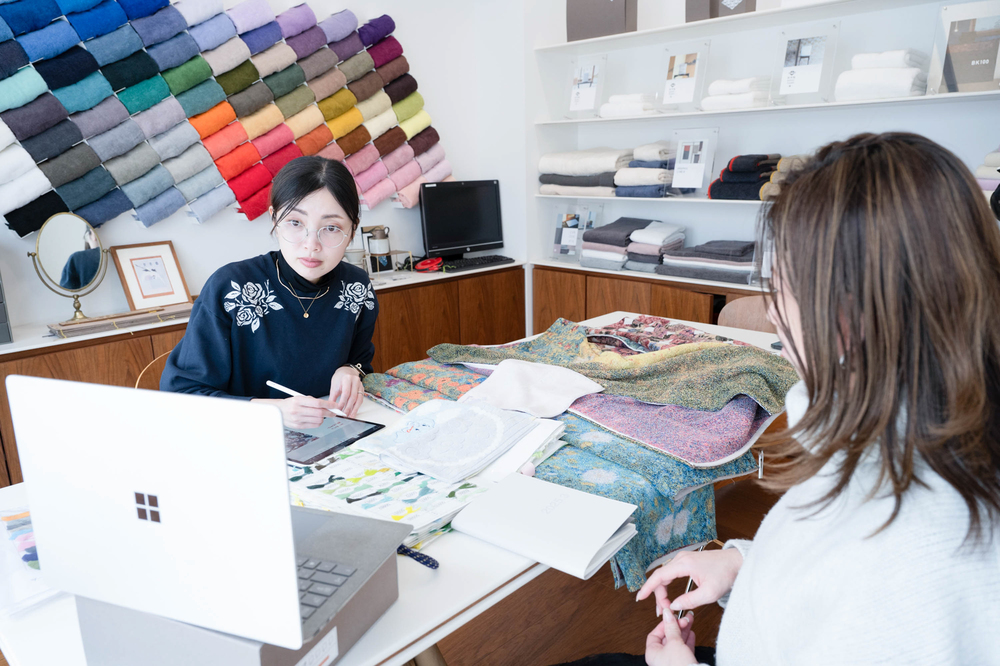
A meeting between Ehara, Sayoko Fujitaka, and technical expert Utsunomiya, connected online.
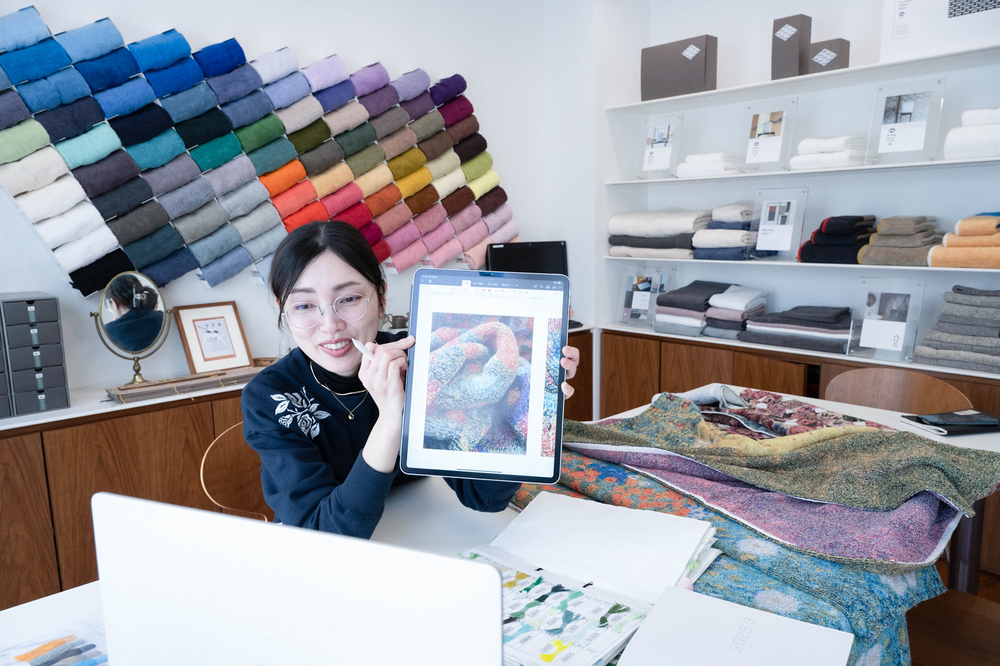
The image of the design is being explained to Utsunomiya in Imabari via video.
This time, Fujitaka also considered how to best utilize the strengths of Ehara's work.
Based on the many years of experience of technical expert Makoto Utsunomiya, we decided to incorporate green in addition to the five colors of thread.
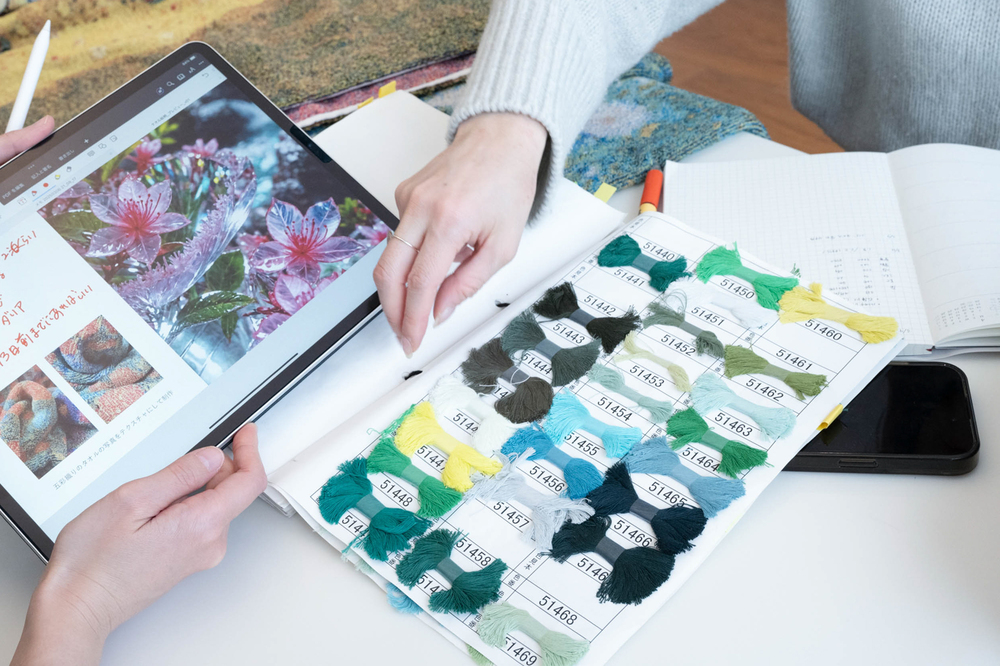
To bring out Ehara's style in the towels, we incorporated green in addition to the five colors of thread.
Furthermore, to create Ehara's signature “Kirakira” effect, silver thread was used throughout the weft thread, and a special glitter thread was intertwined with the white thread. With this arrangement, the areas of the towel that receive the light will appear to sparkle...
Sayoko Fujitaka, director of FUJITAKA TOWEL GINZA, had this to say about this project:
"This was the first time we've used silver thread throughout and glitter thread for the pile, so it was a challenge for us as well. If successful, it will help us take our Gosai weaving techniques to the next level."
Just as it was Ehara's first towel creation, this collaboration was also an adventure for Fujitaka. We're excited to see what the finished product will turn out to be.
Impressed by the amazing craftsmanship of Japan!
The “Kirakira” towel is finally here.
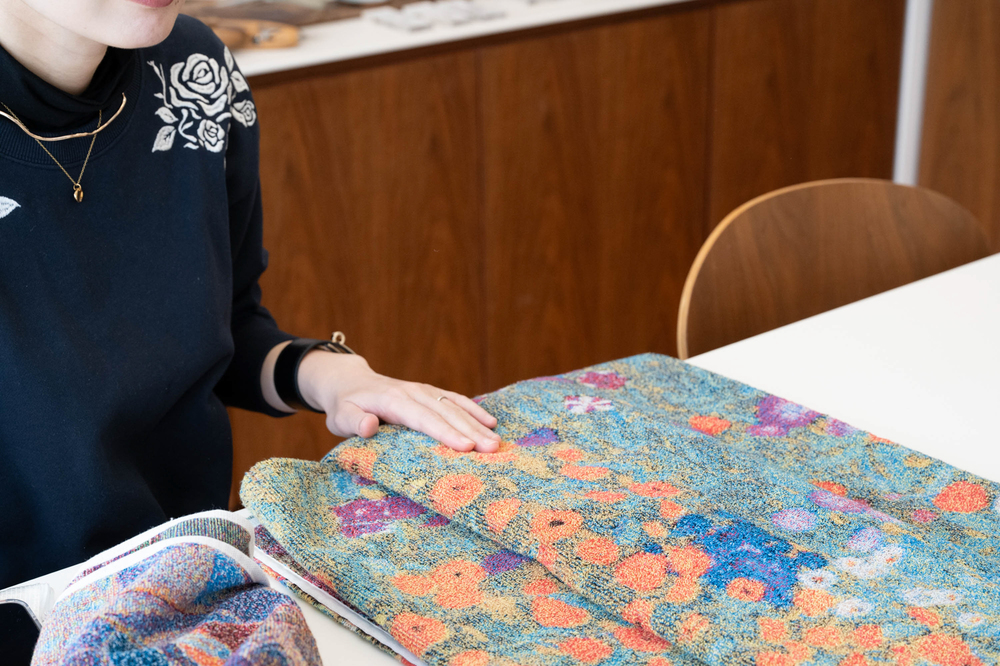
Ehara purchased the Klimt towel that served as the basis for this piece.
Ehara held several meetings at the Fujitaka store, examining the fabric and thread. She purchased towels featuring Klimt's artwork that Fujitaka had previously worked on, and then took a photograph of it to create the designs for this piece using a unique AI-driven technique.
After sending the completed data to Fujitaka headquarters, Ehara heads to Imabari City, Ehime Prefecture, where the towels are actually woven, for final adjustments.
Ehara says she was shocked when she saw the first sample upon arrival.
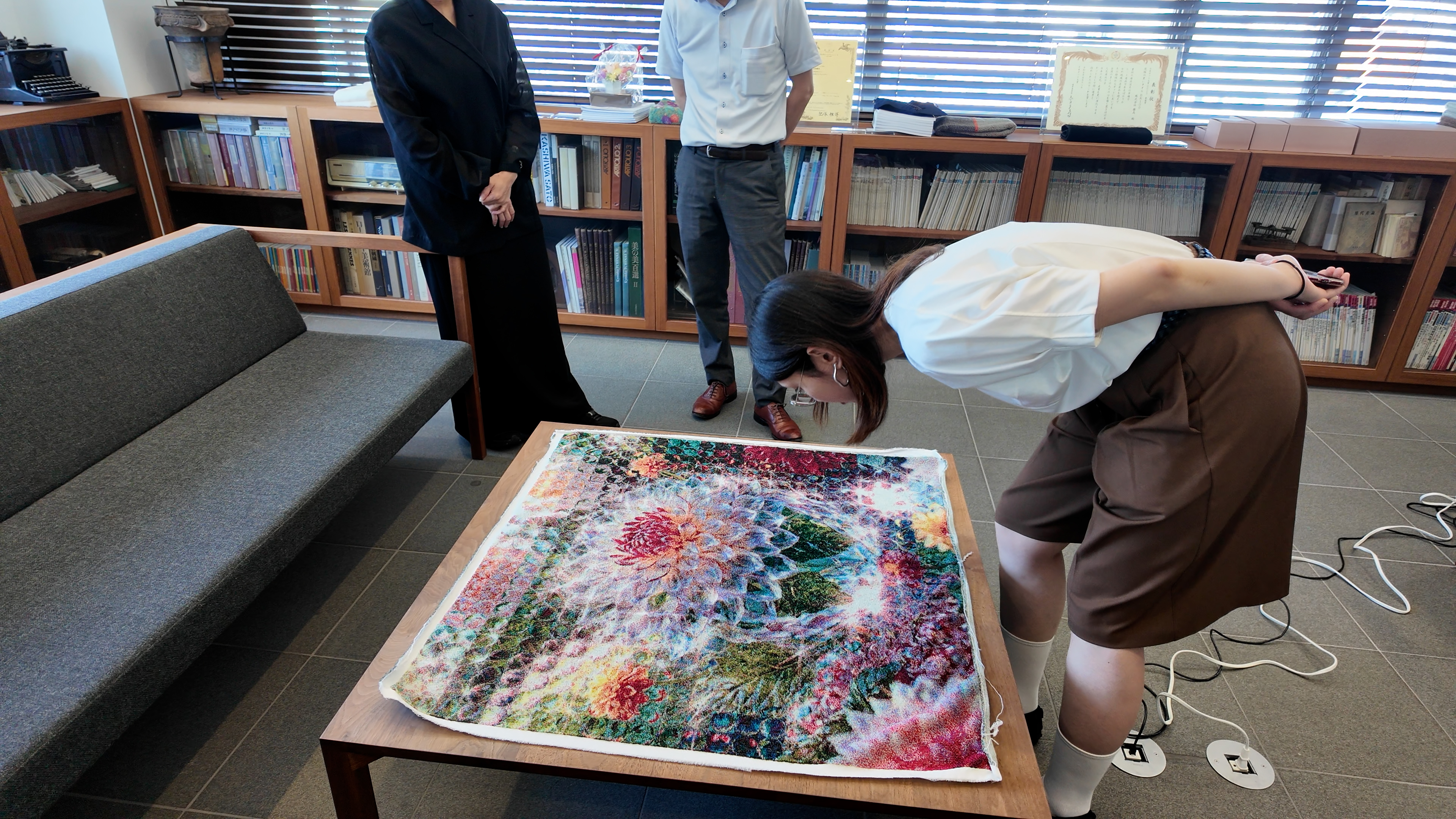
Meeting the first sample towel, it was beyond her imagination.
"All I could say was, 'Amazing!' Unlike regular towels, these towels use silver and glitter threads, which gives them a sparkling look not only in the image but also in the towel itself. I really felt the high level of Japanese manufacturing."
Ehara was impressed with the finished sample, but then the final adjustments began.
She repeatedly adjusted the data while reviewing the samples, checking whether the pattern was crushed or the colors weren't coming out properly.
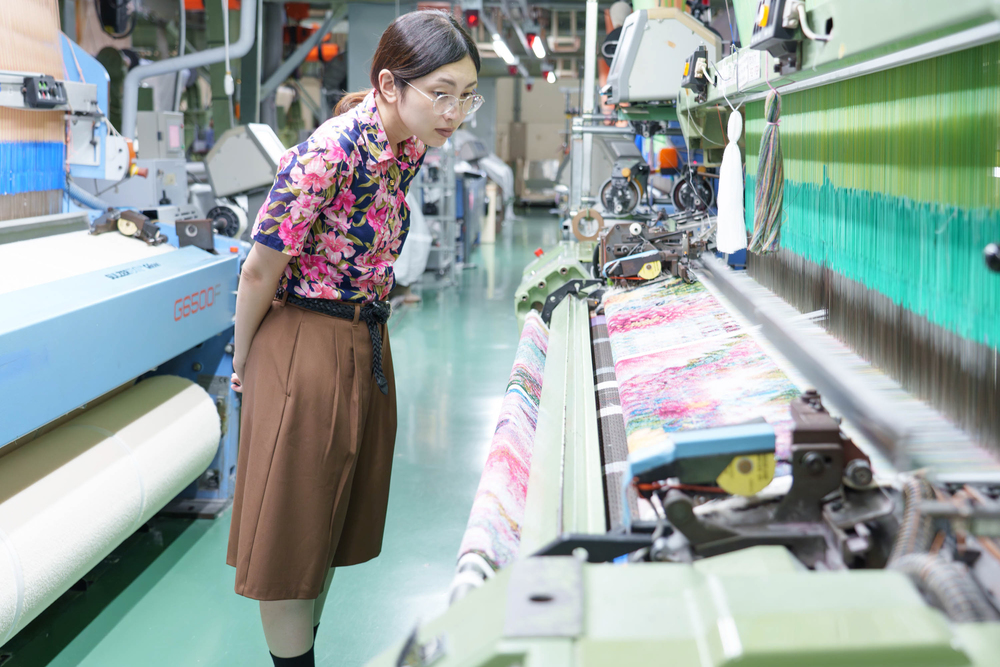
She visited Fujitaka headquarters, production site to see them being woven on a special machine for five-color weaving.
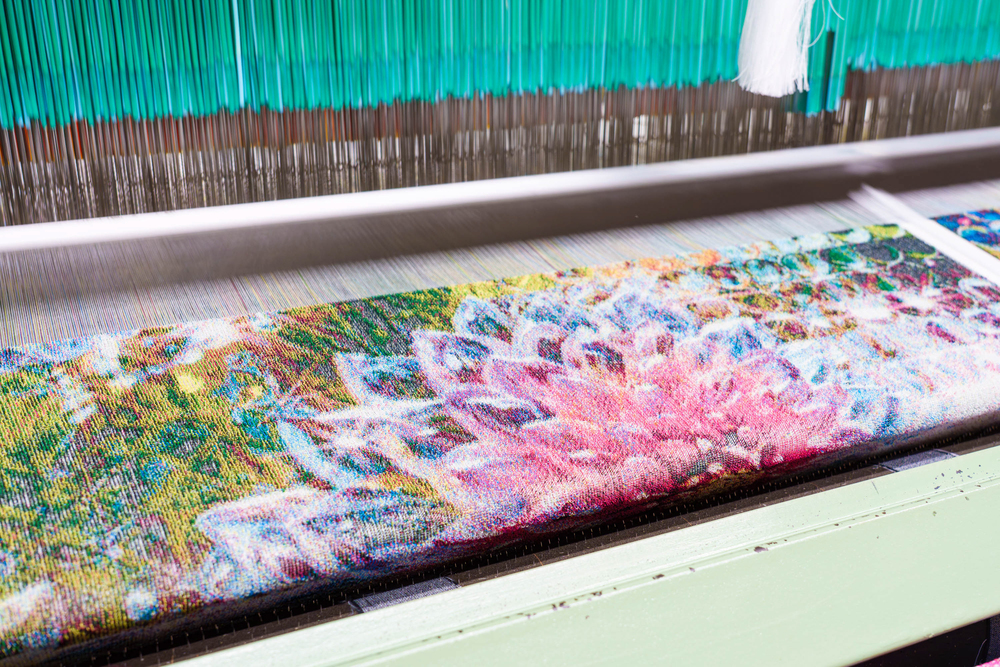
A closer look reveals that the floral patterns are made up of a collection of tiny threads.
The delicate craftsmanship is astounding.
Ehara and Utsunomiya also adjust the data while calculating how much the pattern will shrink after washing and whether there will be any misalignment. Just thinking about it is a daunting task.
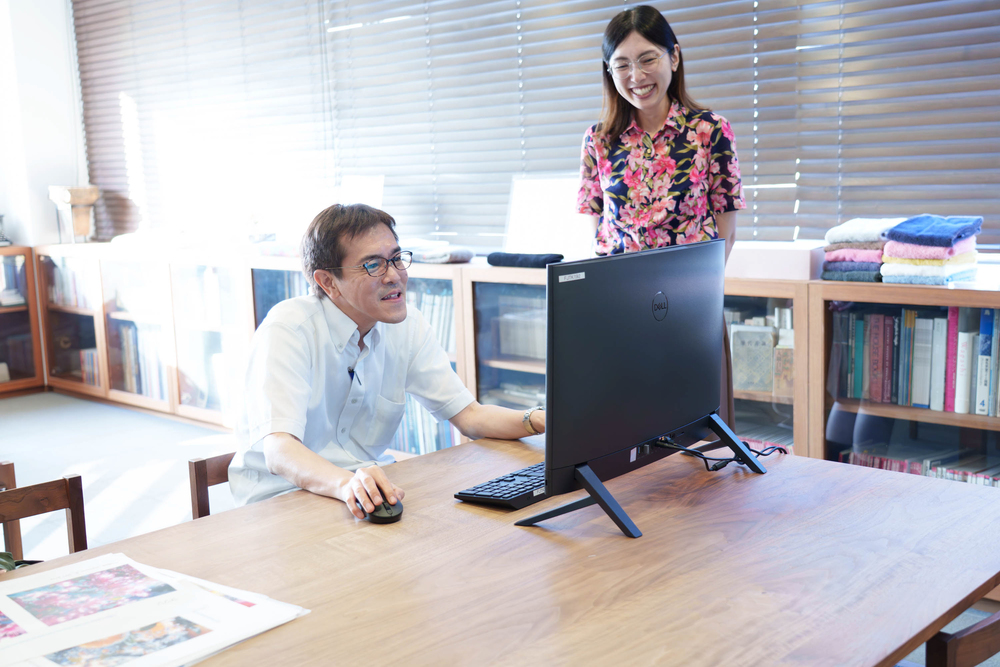
Ehara and Utsunomiya.
By exchanging opinions next to each other, the difficult finishing adjustments go smoothly.
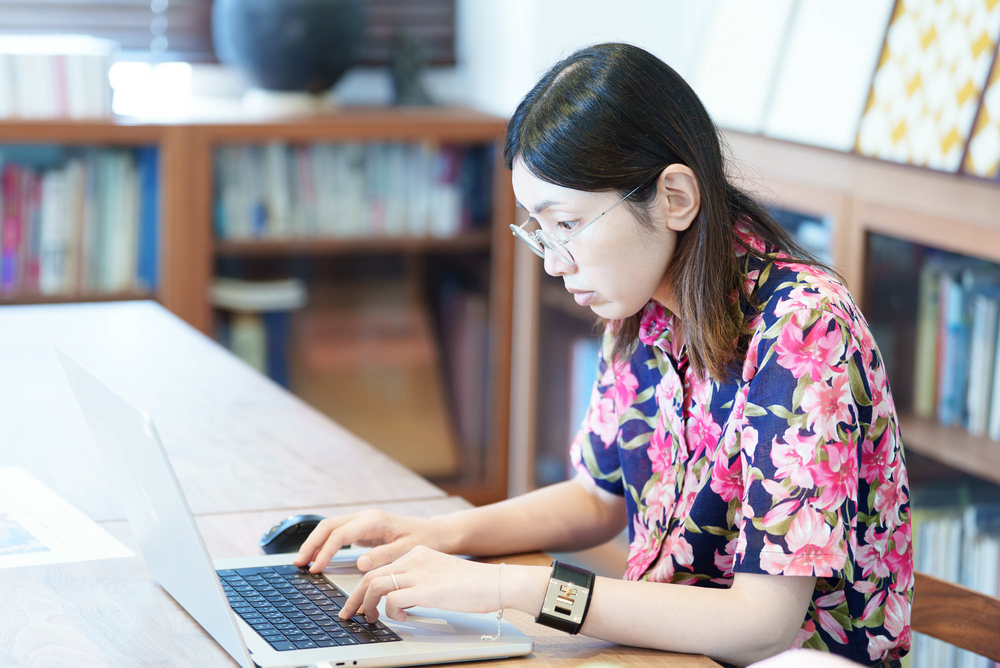
They concentrated on making the final adjustments within the limited time of their three-day, two-night stay in Imabari.
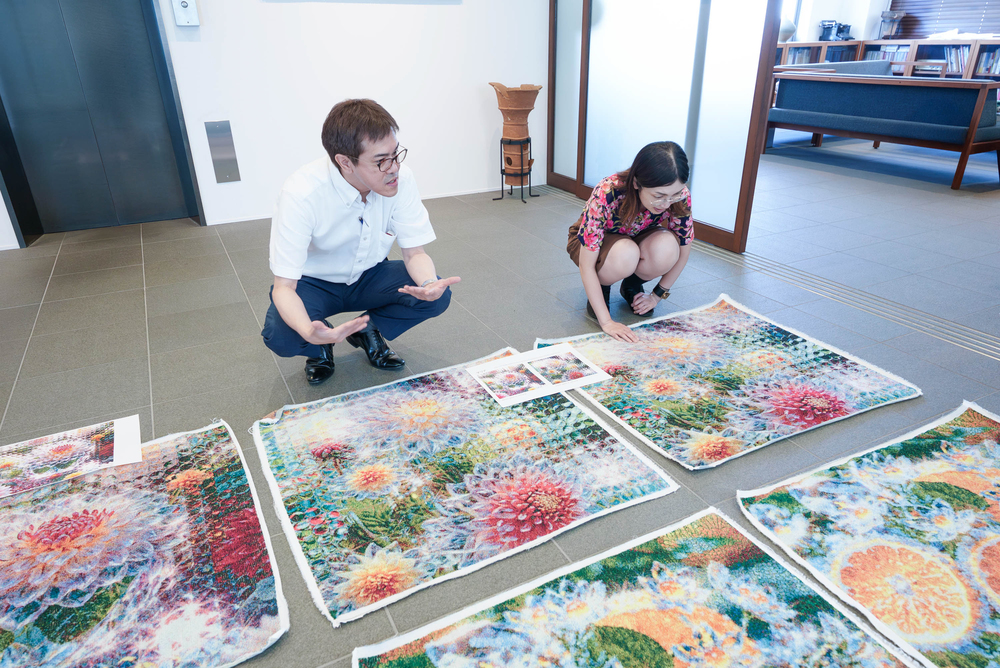
They checked the colors and other aspects while comparing several samples.
Ehara says that this process reminded her of her work as a VJ.
"My experience as a VJ came in handy when printing the data onto the towels.
About 10 years ago, VJ images had low resolution, so even if an image looked good on a computer, it would often look grainy when projected on location. I would actually output the image and then make adjustments, so it brought back memories of those days."
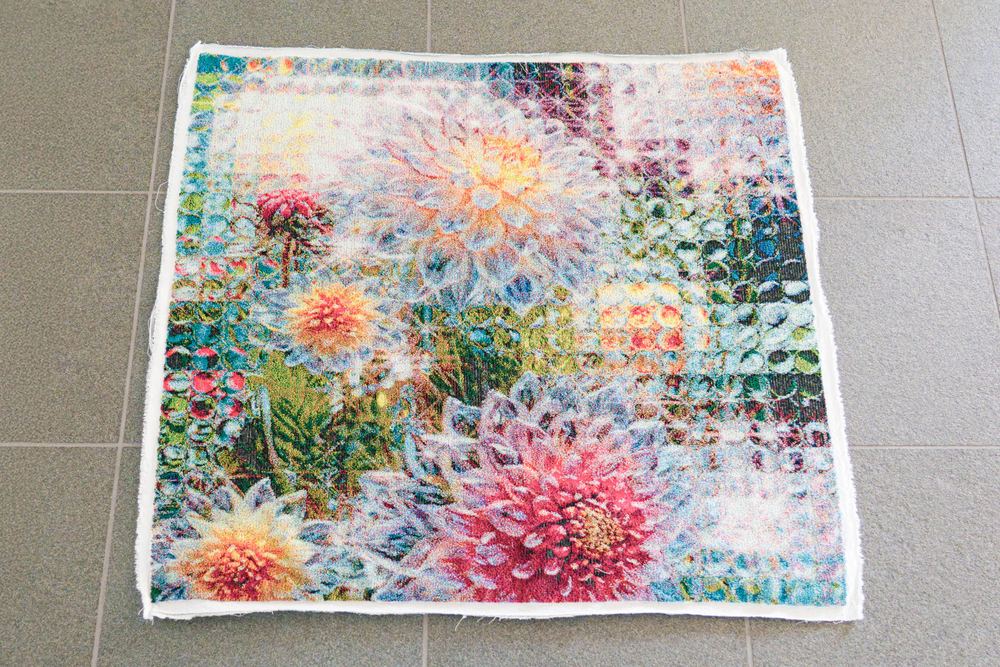
Inspired by the chrysanthemum, a symbol of Japan, "Crystal Chrysanthemum" depicts sparkling glass flowers.
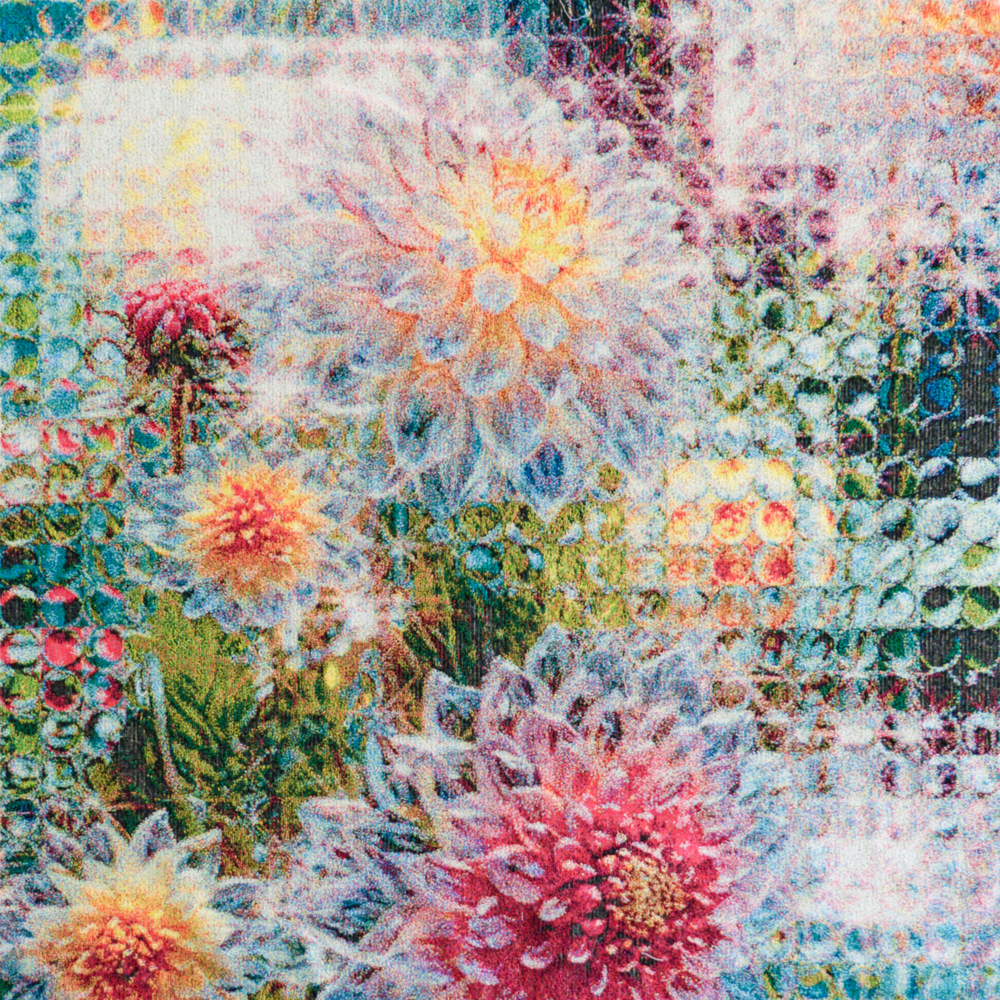
Ehara's “Kirakira” is beautifully expressed in the towel fabric.
By repeatedly working together, the precision of the towel piece rapidly improved. After producing more than 10 samples, the piece was finally completed.
This towel piece is the culmination of Ehara's artistic sensibility and Fujitaka's technical expertise.
The result is a stunning piece that overturns conventional ideas about towels. It resembles a painting, yet shimmers beautifully when illuminated by light—a vision expressed in the towel.
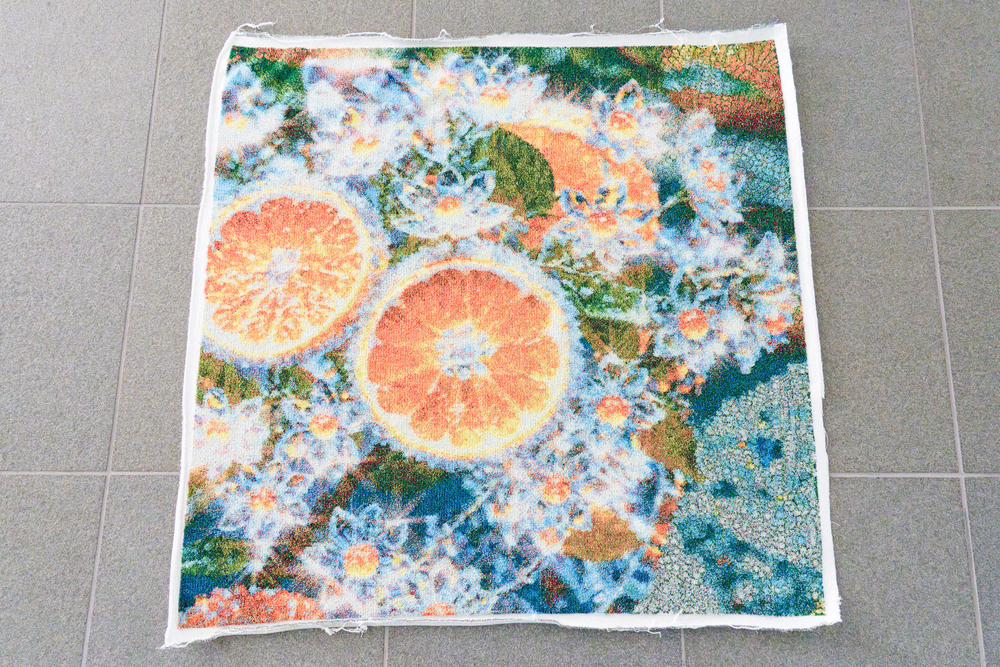
"Mikan Jewels" (approx. 92 x 92 cm) is scheduled for general release.
I'd love to see it in a store.
One of the completed works, a towel with a chrysanthemum motif titled "Crystal Chrysanthemum," will be exhibited and sold at the “Galerie Glaab” gallery in Bern, Switzerland (October 2-18) and the “Art Salon Zurich” art fair in Zurich (October 24-26).
And speaking of Ehime, where Imabari City is located... Mikan Jewels, a towel with a mandarin orange motif, is scheduled for general release! Starting November 13th, a limited number of 40 towels will be available for sale at FUJITAKA TOWEL GINZA, the Imabari Towel Main Store, and other stores for 16,500 yen (tax included). Come and see for yourself the “Kirakira” expressed in the towels.
imabari towel digital art gallery
https://www.imabaritowel.jp/digital-art-gallery
Saeko Ehara (Official Website)
https://skohr.works
Fujitaka Co., Ltd. (Official Website)
https://fujitaka.co.jp/en/
Galerie Glaab (Official Website)
https://www.galerieglaab.com
Art Salon Zurich (Official Website)
https://www.artsalonzurich.com/en/welcome